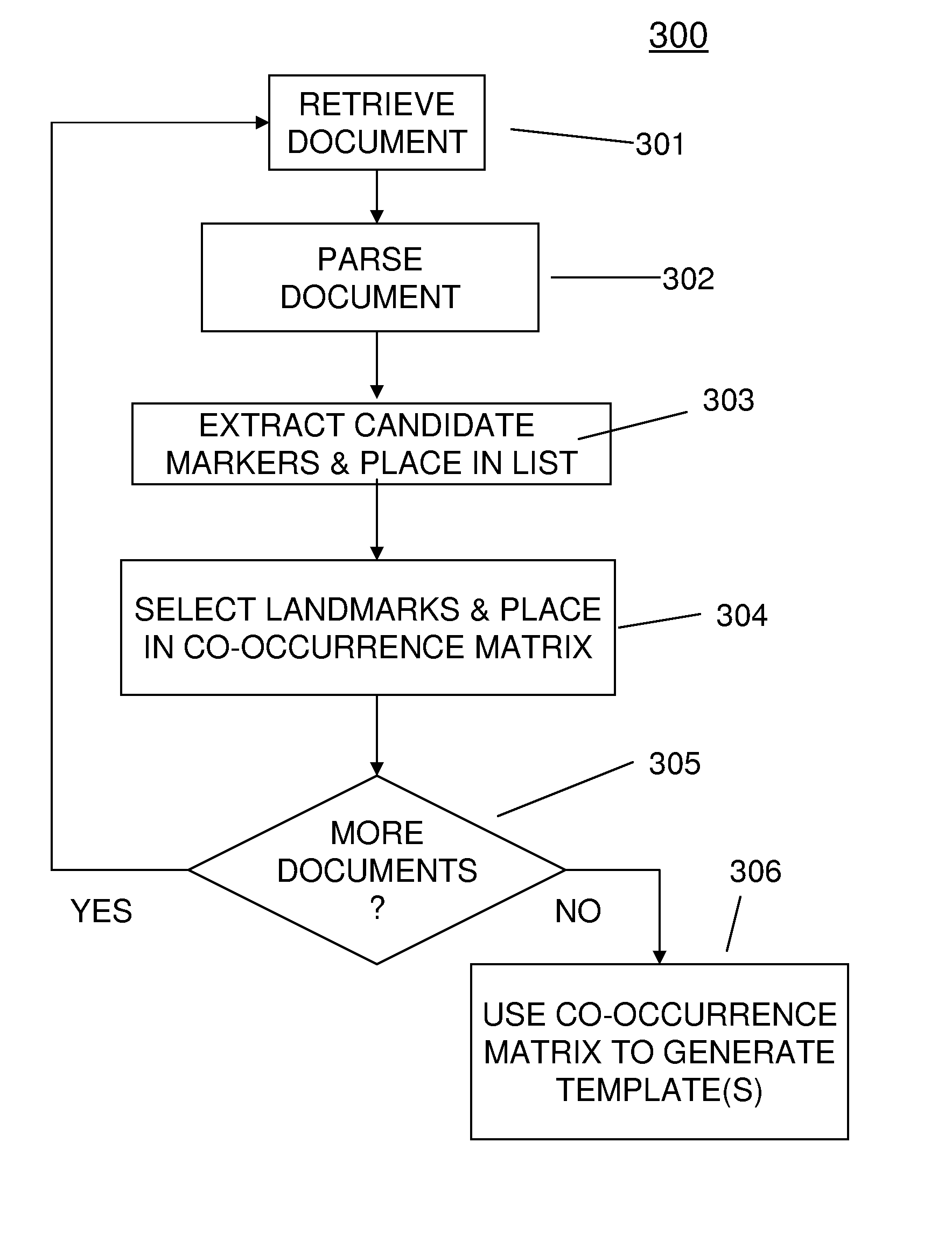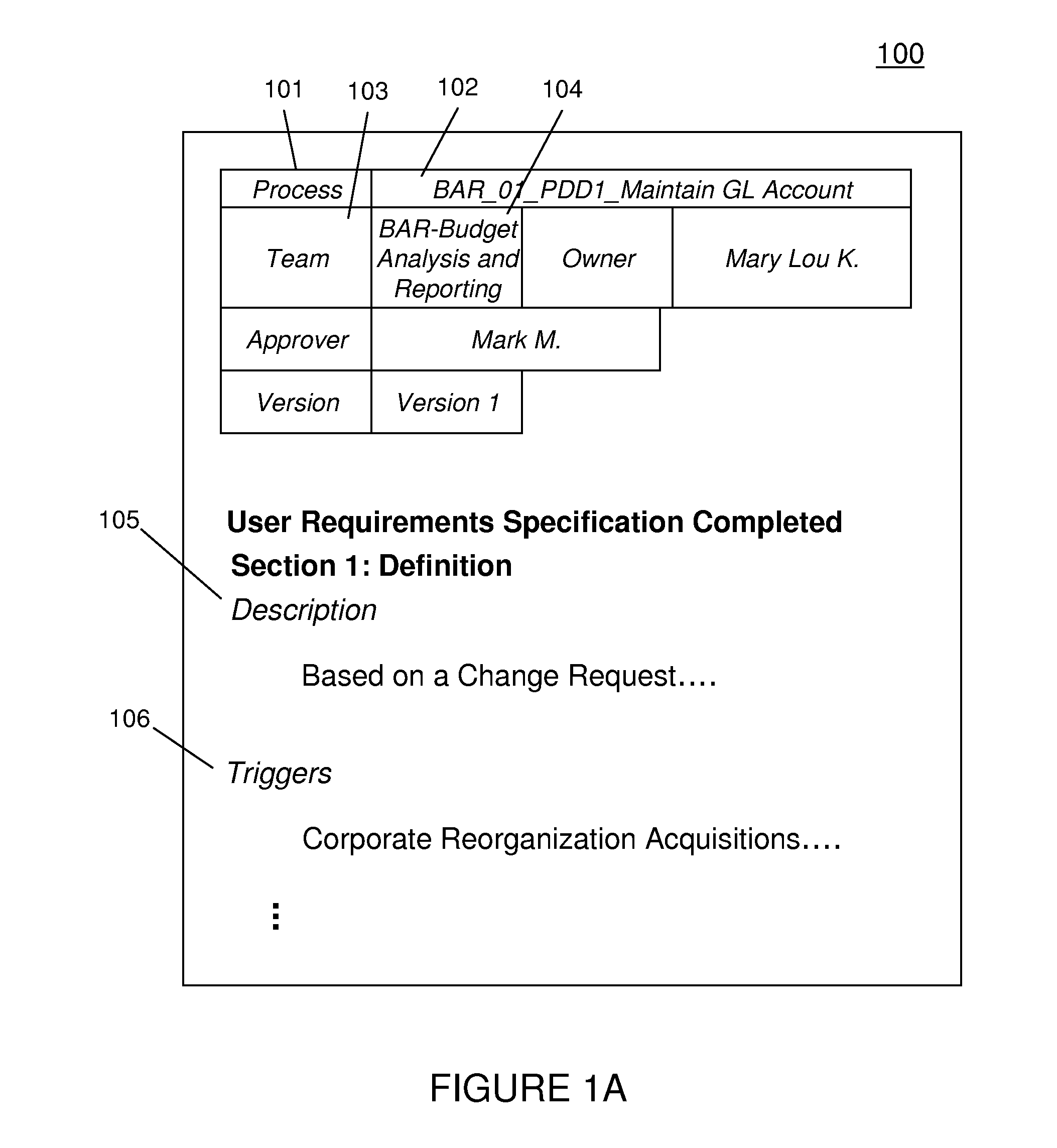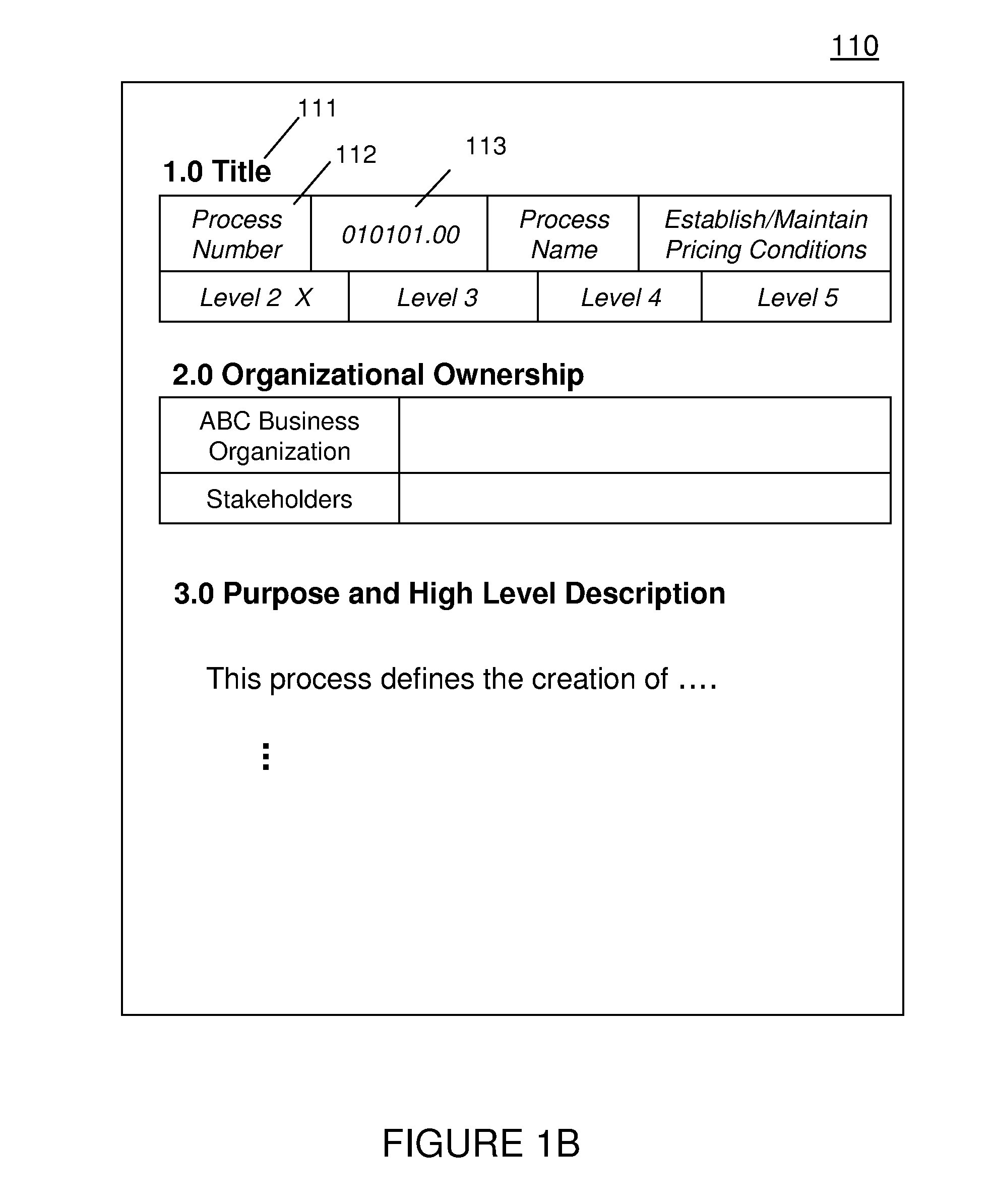Method to identify common structures in formatted text documents
a text document and common structure technology, applied in the field of document processing system, can solve the problems of not being able to take advantage of text styling information, not being able to apply to flat document structure, and file names not sufficiently descriptive to be re-separated
- Summary
- Abstract
- Description
- Claims
- Application Information
AI Technical Summary
Benefits of technology
Problems solved by technology
Method used
Image
Examples
Embodiment Construction
[0037]Referring now to the drawings, exemplary embodiments of the method and structures according to the present invention will now be described.
[0038]The present invention was initially developed as an automated mechanism to assist in cleansing of documents generated, for example, by a teamworking on a service engagement, largely conforming to a general, if not vague, previous project-based template. Over time, the original template, as well as the template used by the team for its latest work, has evolved, including evolution during the latest team's efforts. That is, this latest team has itself possibly made various modifications, based on the unique problems encountered during the process of developing its latest service engagement. FIGS. 1A and 1B exemplarily show portions of documents that will be used to illustrate the methods of the present invention.
[0039]FIG. 2 shows a pictorial representation of a data processing system 200 in which illustrative embodiments described belo...
PUM
 Login to View More
Login to View More Abstract
Description
Claims
Application Information
 Login to View More
Login to View More - R&D
- Intellectual Property
- Life Sciences
- Materials
- Tech Scout
- Unparalleled Data Quality
- Higher Quality Content
- 60% Fewer Hallucinations
Browse by: Latest US Patents, China's latest patents, Technical Efficacy Thesaurus, Application Domain, Technology Topic, Popular Technical Reports.
© 2025 PatSnap. All rights reserved.Legal|Privacy policy|Modern Slavery Act Transparency Statement|Sitemap|About US| Contact US: help@patsnap.com



